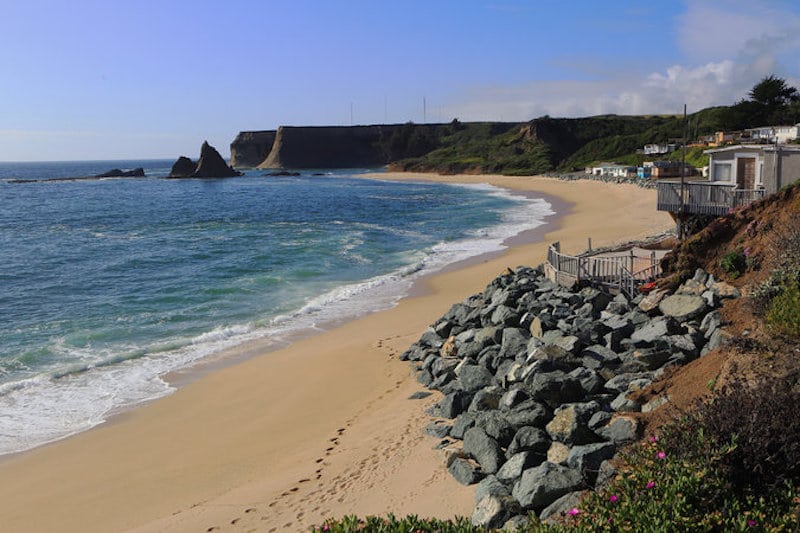For thirty million dollars…
Do you remember last year when it was revealed that the venture capitalist billionaire Vinod Khosla had closed access to Martin’s Beach, near San Francisco?
Five years before, Kholsla had thrown $37-and-a-half million at a 53-acre hunk of land that included what had been the only public access to the beach, a lil private road.
For a few years, nothing changed and then, last year, anyone who wanted to use the private road to get to the beach was gifted the spectacle of private guards blocking their way.
Justin Housman wrote about it eloquently in Surfer magazine last year:
“You may be thinking to yourself, well, what’s the big deal? Khosla owns the property; it’s his right to keep the kids off his lawn. Well, the big deal is that for decades the previous owners of Martin’s Beach had allowed the public to cross the now-closed gate and use a private road to get down to the sand. And the California Constitution declares that all beaches up to the mean high tide line—any beach not owned by the military, anyway—are public property. Normally the law allows property owners to keep the landless hordes from sliming their way across privately held land on their way to a beach. But since the public had used Martin’s Beach Road for decades before Khosla bought the land and shut down the party, a bit of California law called a prescriptive easement kicked in. That means that if the public has traditionally used a bit of private property (in this case, the road), the state has the authority to claim that private land as public. This is why Khosla will lose his fight. People have always had access to Martin’s Beach; Khosla would have, or should have, known that when he bought the land; therefore, he can’t just act all biliionaire-y and cut off long-used access. Case (eventually, after thousands of dollars in legal fees) closed.”
Yesterday, it was revealed in the New York Times that the billionaire will reopen the road… if anyone wants to cough up thirty mill. How’s that for a deal? That’s almost seven mill less than what he paid for the joint eight years ago. A bargain, maybe. Wait.
Y’don’t get the 53-acres, no, no, no.
Thirty million will restore public access to the beach.
What a zany proposition!
Shall we examine the NY Times’ report?
“Now, for the first time, lawyers for Mr. Khosla have proposed in negotiations with the state to restore public access for almost the amount that Mr. Khosla paid for the land.
“But the commission’s executive officer, Jennifer Lucchesi, said in a telephone interview, “We do not agree with that value, and we believe the value is significantly less than that.” Ms. Lucchesi added, “We have not seen any backup documentation to support the $30 million value.”
“The commission planned to offer its own assessment, she said.
“The two sides are actually trying to agree on the value of a right of public use of Martins Beach Road, which leads from the highway to the beach, and access along the shoreline itself, Ms. Lucchesi said.
“The talks were initiated under legislation that took effect in January 2015, she said. If the two sides cannot agree, the commission could resort to eminent domain, which allows the state to expropriate private property for public use.
“Mr. Khosla’s lawyer, Dori L. Yob, could not be reached for comment by telephone or email. But in her letter to the commission, dated Feb. 3, she said that Mr. Khosla’s limited liability companies, the legal entity that owns the property, closed the beach because demand was low, asserting that more than 10 cars showed up to use it only about 15 days a year.
“Ms. Yob said that while the current real estate market value of the land was $30 million, the Martins Beach owners previously offered less expensive solutions to meet the “limited demand” for access as a way to avoid lengthy litigation and further expenses.
“The cost to acquire the property is significant and should be weighed against the benefits,” she wrote. “There is no vital link to navigable waters at issue. There is not a significant demand for access to the property.”
What do you think of this scenario?
Is Mr Khosla a very smart biz-man whose expert nose can sniff out a lucrative opportunity, however it presents itself, or is he the personification of everything wrong within the capitalist system?
That everything, and not just the paper castles of stocks but even the right for ordinary citizens to access a beach, has a price?







